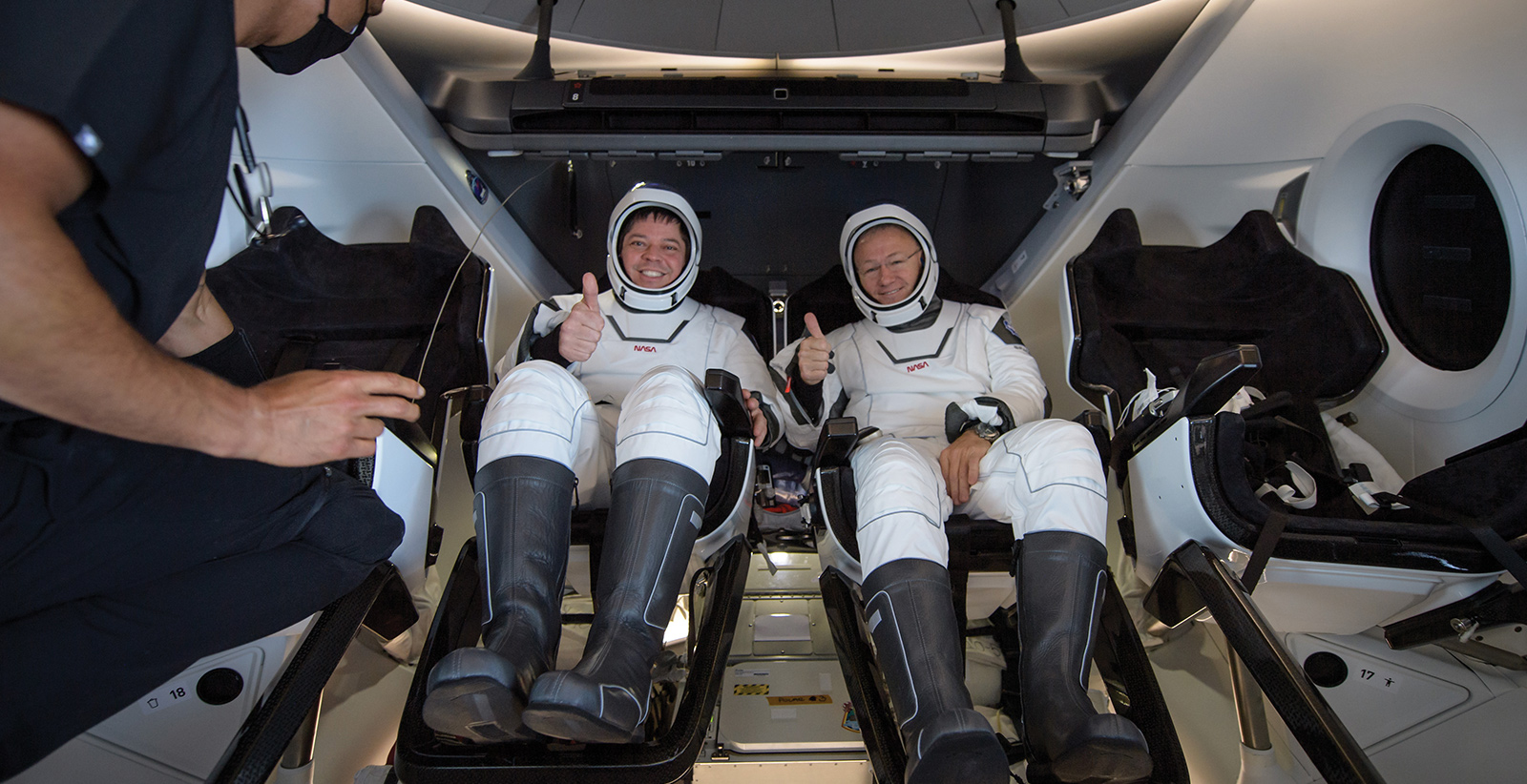Stay Up to Date
Submit your email address to receive the latest industry and Aerospace America news.
The Life Sciences and Systems Technical Committee advances technologies required to keep people healthy and safe as they explore space.
A SpaceX Crew Dragon capsule became the first commercial spacecraft to fly humans in orbit, delivering NASA astronauts Bob Behnken and Doug Hurley to the International Space Station in May on the Demo-2 mission that paved the way for the Crew-1 mission launch in November. The Demo-2 astronauts and capsule returned to Earth in August, splashing down in the Gulf of Mexico. SpaceX engineers described the upgraded capsule’s environmental control and life support system in the 2020 proceedings of the International Conference on Environmental Systems. Dragon combines lithium hydroxide sheets, activated charcoal, HEPA filtration, an ammonia-scrubbing resin and humidity-sipping Nafion membranes for air revitalization. Umbilical connections supply air cooling and perform leak checks on the astronauts’ suits. During the capsule’s return through the atmosphere, storage tanks of breathable nitrox gas cooled the cabin air via open-loop purge. The cabin also has a refrigerant-based air conditioner for before launch and after splashdown. The technology was demonstrated in January in a ground test with suited test subjects ahead of the Demo-2 mission, which set up the November launch of four astronauts for the Crew-1 operational mission.
NASA conducted Spacecraft Fire Safety Experiment IV in May on a predisposal Northrop Grumman Cygnus spacecraft. The microgravity fire investigation tested large-scale combustion at low total cabin pressures and elevated oxygen concentrations. Researchers included a “smoke eater” and carbon dioxide scrubber for Saffire-IV to demonstrate cleanup of toxic combustion gases. As published in Fire Safety Journal in May, previous Saffire research involved an enclosed furnace burning common materials to compare fire detection technologies. Investigators at the Desert Research Institute in Nevada and the University of Nevada, Reno, found multiple key technologies were sensitive to microgravity fire detection, including low-cost metal oxide sensors and a smoke-sniffing particle counter.
In September, University of Connecticut researchers published results in the Proceedings of the National Academy of Sciences of their experiment looking at the effects of extended spaceflight on muscle growth. The signaling proteins myostatin and activin A regulate muscle growth. Suppressing these proteins, either genetically or pharmaceutically, protected mice from muscle and bone loss during extended spaceflight on the ISS. Untreated mice experienced typical muscle and bone loss during microgravity but recovered within two weeks upon postflight treatment with a signal protein inhibitor. A similar therapy could potentially help humans maintain a baseline physique during extended microgravity flights.
NASA launched its Perseverance rover in July as part of its Mars 2020 mission. Perseverance carries a novel technology demonstrator for life support and rocket propellant production. The Mars Oxygen In-Situ Resource Utilization Experiment, or MOXIE, is an oxygen-generation experiment utilizing Martian air, which is 96% carbon dioxide. The intake flow is filtered, compressed to about 1 bar, and then heated to 800 degrees Celsius for the solid oxygen electrolysis reactor, where a cathode electrochemically splits some of the carbon dioxide into oxygen and carbon monoxide. If successful, the small-scale experiment, about the size of a car battery, will separate oxygen gas from other reaction products. MOXIE will analyze the purity and production rate of the oxygen before cooling and venting it back into the Martian atmosphere. NASA wants to understand how well this technology performs on Mars to determine how it could be used to support human exploration of that planet.
Related Posts
Stay Up to Date
Submit your email address to receive the latest industry and Aerospace America news.




